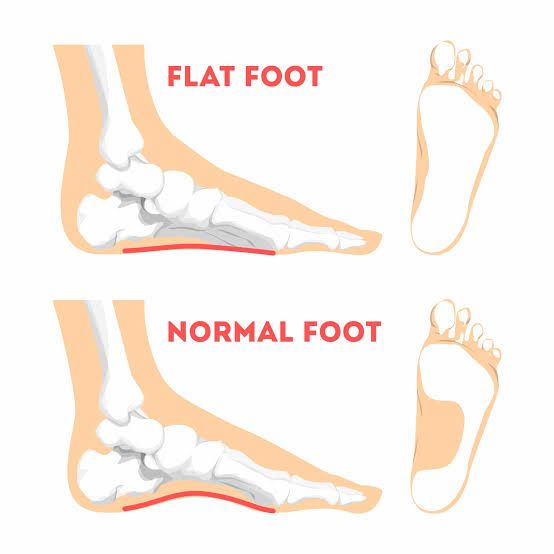Flat Feet: A Small Shift That Can Impact Your Whole
Body
When we hear the term flat feet—also known as fallen arches or the medical term pes planus - it
might not sound like a serious issue. But did you know that this subtle change in the structure of
your feet can have a ripple effect across your entire body?
What Exactly Are Flat Feet?
Flat feet occur when the arches of your feet collapse, causing the whole sole to make contact with
the ground. While this may seem like a harmless shift, the arch of your foot plays a crucial role in
absorbing shock and distributing pressure with every step you take.
Normally, your foot's arch acts as a spring, helping cushion your movements and protecting joints
like your knees, hips, and spine. But without that natural support, your body’s biomechanics can
become compromised—leading to issues far beyond your feet.
How Flat Feet Affect Your Body
Flat feet can lead to a condition called *overpronation*, where your feet roll inward too much
while walking or running. This abnormal movement places extra stress on the inner side of your
foot and ankle, causing your ligaments and muscles to overstretch over time.
But the effects don’t stop at your feet. Here’s how the impact travels up your body:
Ankles: Uneven pressure makes ankles less stable and more prone to soreness or injury.
Knees: Overpronation affects your posture and can cause your knees to turn inward, increasing
strain and leading to conditions like knock-knees or persistent knee pain.
Hips and Lower Back: The misalignment throws off your body’s balance. To compensate, your
hips and spine may shift, leading to lower back pain, pelvic tilt, or even an exaggerated curve in
your spine.
Over time, all these adjustments mean that your legs, hips, and back have to work harder just to
keep you upright and steady—leading to faster fatigue, soreness, and even long-term joint
problems.
Do You Have Flat Feet? Signs to Watch Out For:
Flat feet can sometimes go unnoticed until they start causing problems elsewhere. Here are some
daily clues that might point to flat feet:
- Tired, achy feet after short periods of walking or standing
- Shoes wearing down faster on the inside edge
- Recurring discomfort in your knees, hips, or lower back
- Feeling unstable or more prone to tripping—especially on uneven surfaces
What Can You Do About Flat Feet?
The good news is that most cases of flat feet can be managed effectively and often without surgery.
Getting ahead of the problem with the right steps can make a big difference in your comfort and
mobility.
Here are some treatment options to consider:
* Supportive Footwear or Orthotics : Custom shoe inserts can help restore proper alignment and
balance.
* Strengthening Exercises: Focusing on foot, ankle, and hip muscles can improve support and
stability.
* Balance Training : Activities that improve coordination can help counteract instability.
* Physical Therapy : A specialist can teach you movement strategies and corrective exercises to
ease discomfort and prevent future issues.
Conclusions
Flat feet might seem like a minor issue, but ignoring them can start a chain reaction of
misalignment, pain, and fatigue throughout your body. By understanding the effects and taking
action early—through proper footwear, exercises, and awareness—you can protect not just your
feet, but your overall posture, comfort, and mobility.
Your feet are your foundation—take care of them, and your whole body
will thank you




